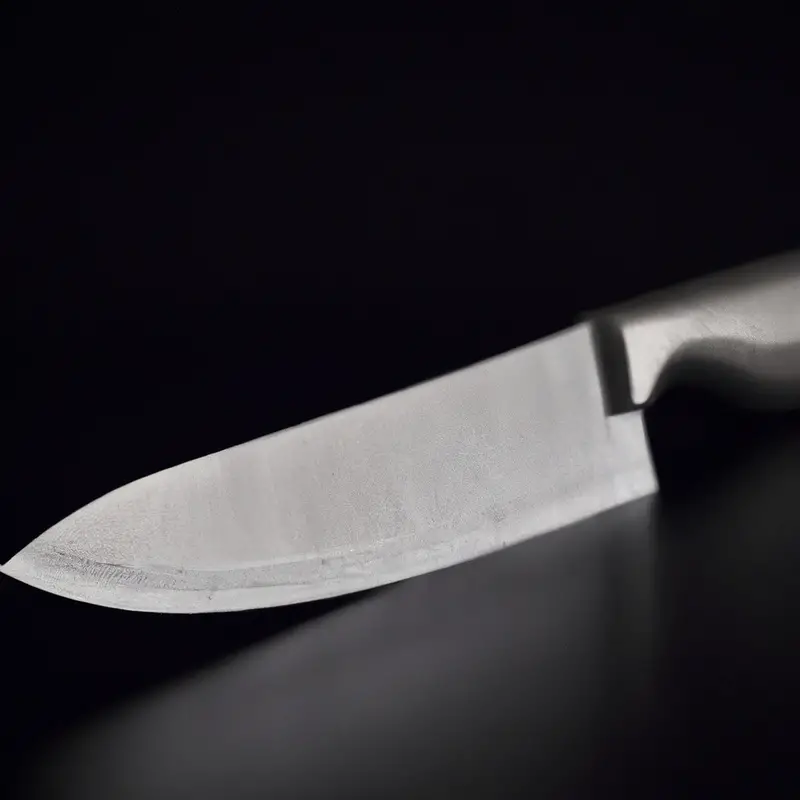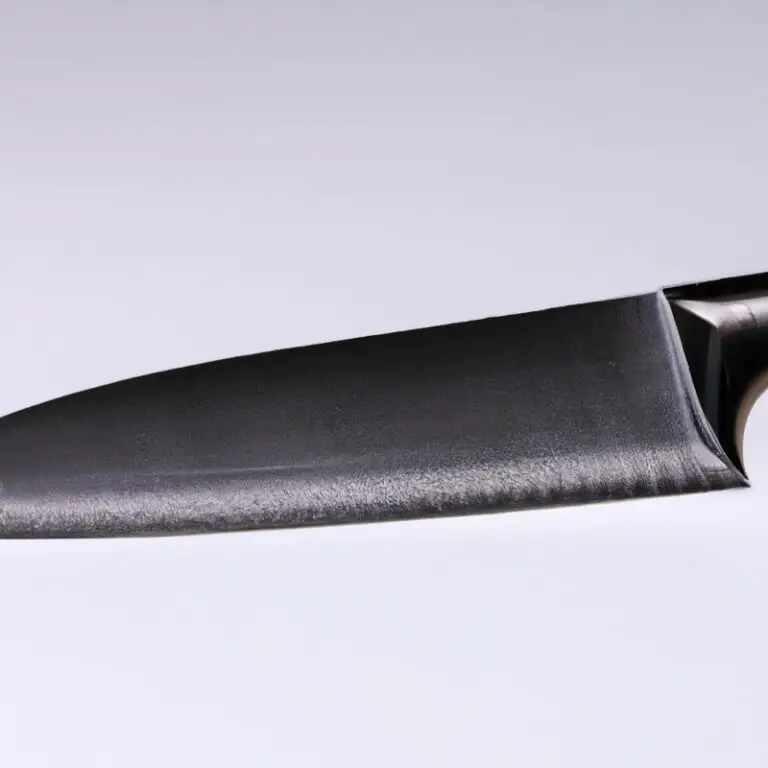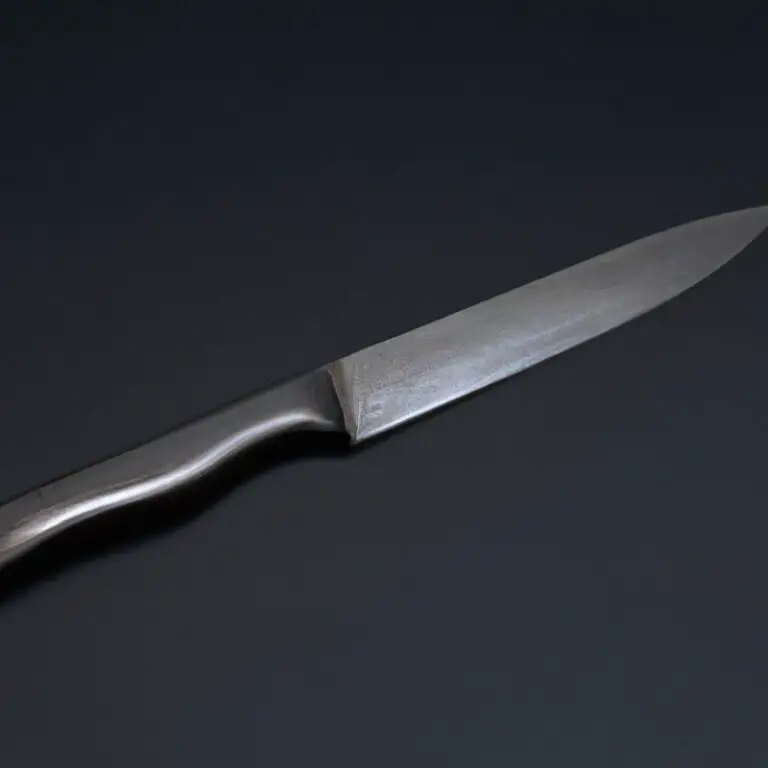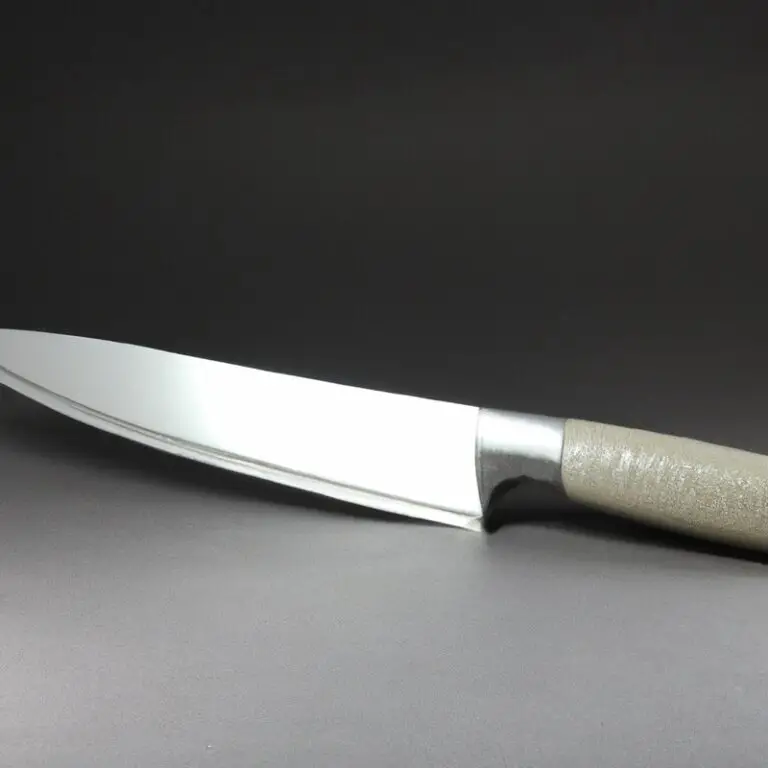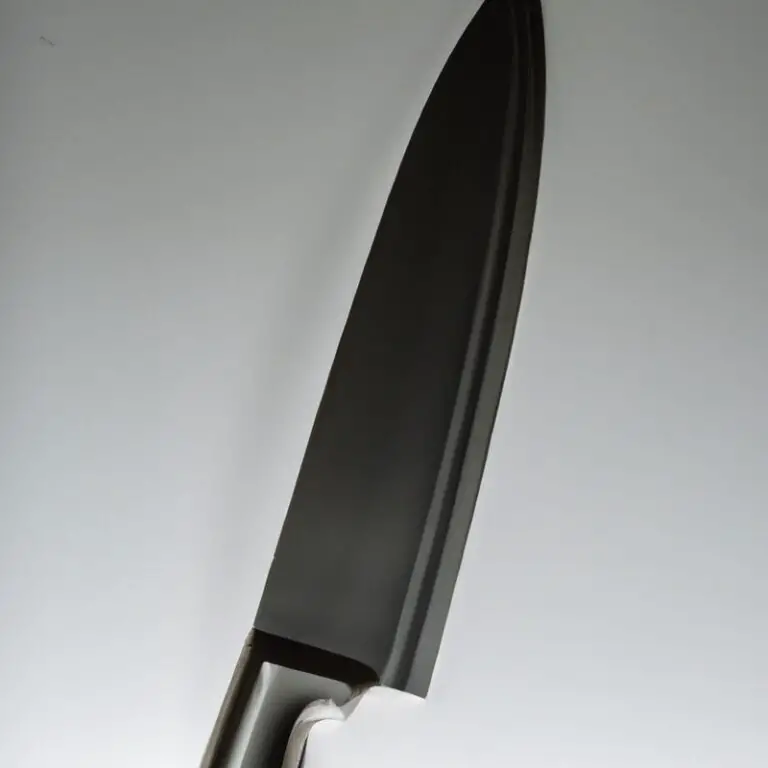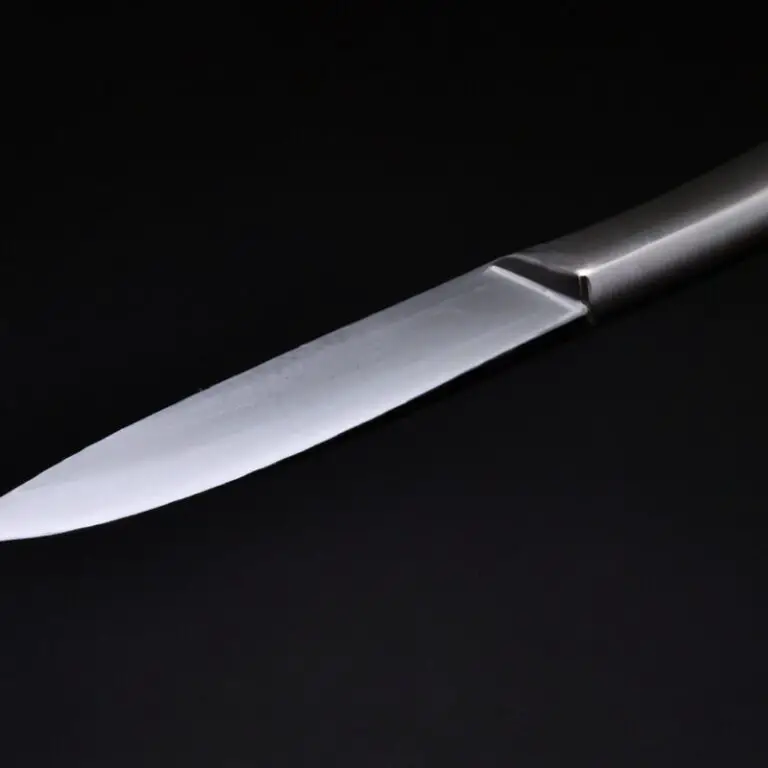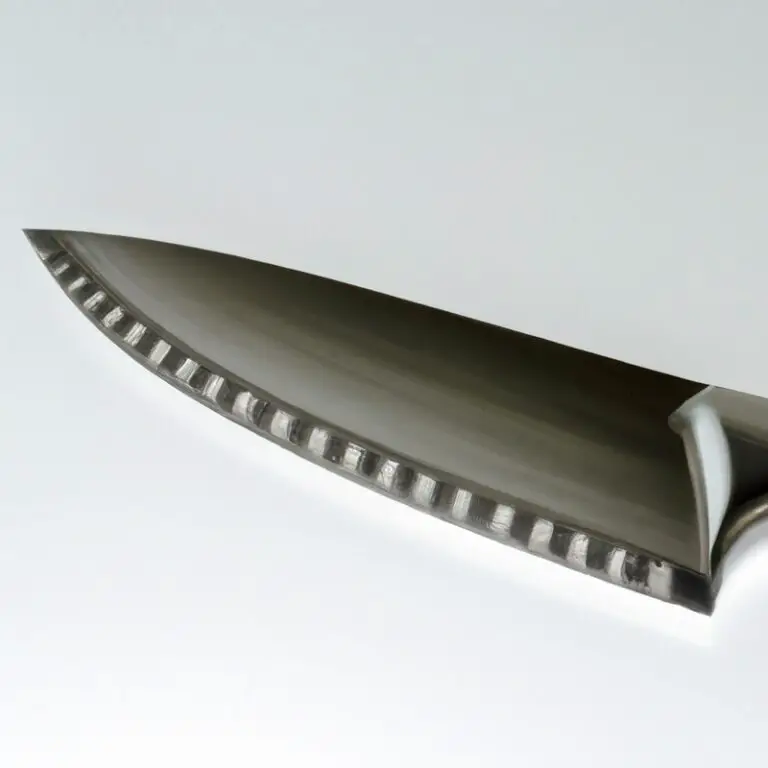What Are The Different Parts Of a Santoku Knife? Explained
Key Takeaways:
- A Santoku knife typically consists of three parts: the blade, the handle, and the bolster.
- The blade of a Santoku knife is shorter and wider than a traditional chef’s knife, making it ideal for chopping, slicing, and dicing.
- The handle of a Santoku knife is designed for comfort and control, with a balanced weight distribution for ease of use.
- The bolster, found where the blade meets the handle, provides added strength and stability for precise cuts.
Have you ever wondered what makes Santoku knives so popular in kitchens around the world? It’s not just their sleek design or versatile functionality – it’s also the unique anatomy of each knife that sets them apart from other types of knives.
In this article, we’ll be taking a closer look at the different parts of a Santoku knife, including the blade, spine, handle, bolster, tang, blade grind, and edge.
Plus, we’ll explore tips for maintaining your Santoku knife and factors to consider when choosing the best one for your needs. Let’s dive in!
| Part | Description |
|---|---|
| Blade | The main cutting portion of the knife. It is shorter and wider than a traditional chef knife with a slightly rounded tip. |
| Tip | The pointed end of the blade that can be used for delicate cutting tasks. |
| Spine | The thick top portion of the blade that provides weight and balance while cutting. |
| Bolster | The thick metal portion between the blade and handle that adds weight and balance while also protecting the hand from slipping onto the blade. |
| Tang | The portion of the blade that extends into the handle, providing balance and stability. |
| Handle | The grip for the knife user, usually made of wood, plastic, or other synthetic materials. |
Understanding the Anatomy of a Santoku Knife
A Santoku knife consists of several essential parts, and understanding its anatomy can help you make better choices while shopping. The blade is the cutting edge, which determines the sharpness and durability of the knife.
The spine is located on the opposite side of the blade and affects the knife’s balance and control.
A comfortable handle can help you maintain a good grip and avoid accidents. You should consider the material and design of the handle before purchasing a Santoku knife.
Bolster and no bolster options have their advantages and disadvantages, so it’s worth considering which one suits your needs.
The tang connects the blade and handle, and you can choose between full, partial, or encapsulated tangs based on your preference and budget. Lastly, blade grind and edge types have a significant impact on the precision and efficiency of your cutting.
A straight edge may be more suitable for fine cutting tasks, and a serrated edge may be better for slicing through tough skins or crusts without causing damage.
The Blade: A Closer Look at the Cutting Edge
The blade is the most important part of a Santoku knife. The cutting edge is the part of the blade that comes in contact with the food being cut.
It is usually made of high-quality stainless steel or carbon steel to ensure it maintains its sharpness and durability.
There are different types of blade edges, including straight and serrated. Straight edges are best for precision cutting, while serrated edges work best for cutting through tough and fibrous foods like bread and tomatoes.
Furthermore, the blade grind is another important factor to consider.
The grind of the blade determines the angle of the edge and affects the sharpness and precision of the knife. The most common types of blade grinds are flat, hollow, and convex.
Lastly, it’s important to keep the blade sharp and clean.
Regular sharpening and honing will ensure that the knife remains efficient and durable. Proper cleaning and maintenance will also prevent rusting and corroding, ensuring the longevity of the blade.
The Spine: How it Affects Knife Balance and Control
The spine of the Santoku knife plays a crucial role in its balance and control. The thickness and shape of the spine determine the weight distribution of the knife, affecting how it feels in your hand and how much control you have over it.
A thicker spine can offer more weight and stability, while a thinner spine allows for better maneuverability and precision.
Additionally, a smooth, rounded spine can make the knife more comfortable to grip and prevent discomfort during extended use. When choosing a Santoku knife, consider the thickness and shape of the spine to find the right balance and control for your cutting needs.
The Handle: Choosing the Right Material and Design
The handle of a Santoku knife is an important factor to consider when choosing the right knife. The handle should provide a comfortable grip and a secure hold to ensure safe and efficient cutting.
There are various handle materials and designs available to choose from, each with its own advantages and disadvantages.
Handle Materials:
- Wooden handles are classic and provide a comfortable grip, but they require more maintenance and are not dishwasher safe.
- Plastic handles are durable and easy to maintain, but they may not provide a comfortable grip for some people.
- Metal handles are sleek and durable, but can be slippery when wet.
Handle Designs:
- Traditional handles have a round shape and enable a comfortable and secure grip. They are also easy to maneuver.
- Ergonomic handles are designed to fit the contours of your hand and provide a comfortable grip. They may also reduce hand fatigue during extended use.
- Western-style handles have a full tang and a bolster for added balance and control. They are also easy to grip and maneuver.
When choosing a handle material and design, consider your personal preferences, the type of food you will be cutting, and the frequency of use. A comfortable and secure grip is essential for safety and efficiency.
Bolster or No Bolster? Pros and Cons of Both Options
Bolsters are the thick metal bands between the blade and handle, while non-bolstered knives lack them entirely. Choosing between a bolstered and non-bolstered Santoku knife comes down to personal preference and intended use.
Here are the pros and cons of both options to help you decide: Bolster: Pros:
- A bolster adds extra weight and balance to the knife, reducing hand fatigue.
- It provides a buffer to protect your fingers when cutting through hard materials like bone.
- A bolster allows you to pinch grip the blade for more control and precision.
Cons:
- Bolsters can make sharpening and honing more challenging.
- They add to the overall weight of the knife, making it less nimble.
- A bolster can prevent your hand from getting close to the blade, making certain cutting techniques difficult.
Non-bolstered: Pros:
- Without a bolster, the blade is more exposed for easier sharpening and honing.
- Non-bolstered knives are usually lighter and more maneuverable.
- They provide more knuckle clearance, making it easier to perform certain cutting techniques.
Cons:
- Non-bolstered knives can cause hand fatigue due to a lack of balance.
- Without the buffer of a bolster, you may be at risk of cutting your fingers when cutting through hard materials.
- Pinching the blade may be more challenging without a bolster to guide your grip.
Both bolstered and non-bolstered Santoku knives have their advantages and disadvantages. Consider your intended use, cutting style, and personal preferences to determine which option is best for you.
The Tang: Full, Partial, or Encapsulated?
The tang of a Santoku knife refers to the portion of the blade that extends into the handle. Full tang knives have a blade that runs the full length of the handle, while a partial tang only extends partially into the handle.
Encapsulated tang knives have a tang that is completely covered by the handle.
A full tang knife is generally considered the most durable and balanced option, providing better control and stability during use. Partial tang knives are lighter and more affordable, but may be less durable and impact the overall balance of the knife.
Encapsulated tang knives offer a sleek appearance but may not provide the same level of durability and balance as full tang knives.
When selecting a Santoku knife, it is important to consider the tang construction and choose an option that feels comfortable and well-balanced in your hand.
Blade Grind: Why it Matters and How to Choose the Right One
Blade Grind: Why it Matters and How to Choose the Right One Blade grind is crucial to the performance of a Santoku knife. It affects the sharpness, durability, and cutting ability of the blade.
There are three common types of blade grind: hollow, flat, and convex.
Hollow grind blades have a concave shape, making them razor-sharp and suitable for chopping and slicing vegetables and meats. Flat grind blades have a straight taper from the spine to the edge, making them sturdier and ideal for heavy-duty tasks.
Convex grind blades have a gradual taper from the spine to the edge, giving them a sturdy and sharp edge for delicate tasks.
When choosing the right blade grind, consider the types of ingredients you will be cutting and the frequency of use. If you plan to use your Santoku knife for daily cooking and slicing vegetables, a hollow or flat grind blade will be suitable.
However, if you intend to cut through tougher ingredients such as meat, a flat or convex grind blade will be more efficient.
Overall, the right blade grind depends on your personal preference, the purpose of the knife, and the ingredients you plan to cut. Ensure to choose a reputable brand and make a well-informed decision before purchasing a Santoku knife.
The Edge: Straight vs. Serrated – Which One is Right for You?
The edge of the Santoku knife can be straight or serrated. Straight edges are good for clean and precise cuts, while serrated edges are preferred for tough cuts like crusty bread and tomatoes.
If you’re looking for an all-purpose knife, then a straight edge is the way to go.
However, if you are planning to prepare a lot of crusty bread or tomatoes, then a serrated edge is recommended. Ultimately, the choice between a straight or serrated edge depends on your personal preference and the type of foods you plan to cut.
Maintaining Your Santoku Knife: Sharpening, Honing, and Cleaning Techniques
Maintaining your Santoku knife is crucial to ensuring it performs optimally and lasts longer. Sharpening, honing, and cleaning are the three main maintenance techniques to keep your knife in top condition.
Sharpening your Santoku knife involves removing the dull edges and restoring its sharpness.
You can use a sharpening stone, a sharpening machine, or an electric sharpener for this task. It’s recommended to sharpen your knife every few months, depending on how frequently you use it.
Honing your Santoku knife, on the other hand, involves realigning the blade’s edge to keep it straight.
You can use a honing steel or ceramic rod for this purpose. Honing should be done often, after every few uses, to maintain the sharpness of the blade.
Cleaning your Santoku knife is of utmost importance to prevent it from rusting and accumulating grime.
It’s best to wash your knife with warm water and soap immediately after use and dry it thoroughly. Avoid putting it in the dishwasher as the harsh detergents and high temperatures can damage its blade.
Maintaining your Santoku knife by sharpening, honing, and cleaning it regularly is crucial to keep it in excellent condition.
By following these techniques, you can ensure your knife performs optimally and lasts longer.
Choosing the Best Santoku Knife for Your Needs: Factors to Consider
When it comes to choosing the best Santoku knife for your needs, there are several factors to consider. Here are some key factors to keep in mind:
- Blade Material: Look for high-quality steel that can hold a sharp edge and resist corrosion.
- Blade Size: Choose a size that feels comfortable in your hand and is suitable for the tasks you plan to use the knife for.
- Handle Design: Look for a comfortable grip that provides good control and doesn’t slip easily.
- Tang Style: Full tang knives are typically more durable and provide better balance, but partial and encapsulated tangs can also work well.
- Bolster: Whether to choose a knife with or without a bolster largely comes down to personal preference. Some people prefer the added weight and control provided by a bolster, while others prefer the ease of sharpening and lighter weight of knives without a bolster.
- Blade Grind: Different types of blade grinds can affect the way a knife performs, so choose a grind that is suitable for the tasks you plan to use the knife for.
- Edge Type: Straight edges are best for slicing and chopping, while serrated edges are better for tasks like cutting bread and tomatoes.
By considering these factors and choosing a knife that meets your specific needs, you can find the perfect Santoku knife for your kitchen.
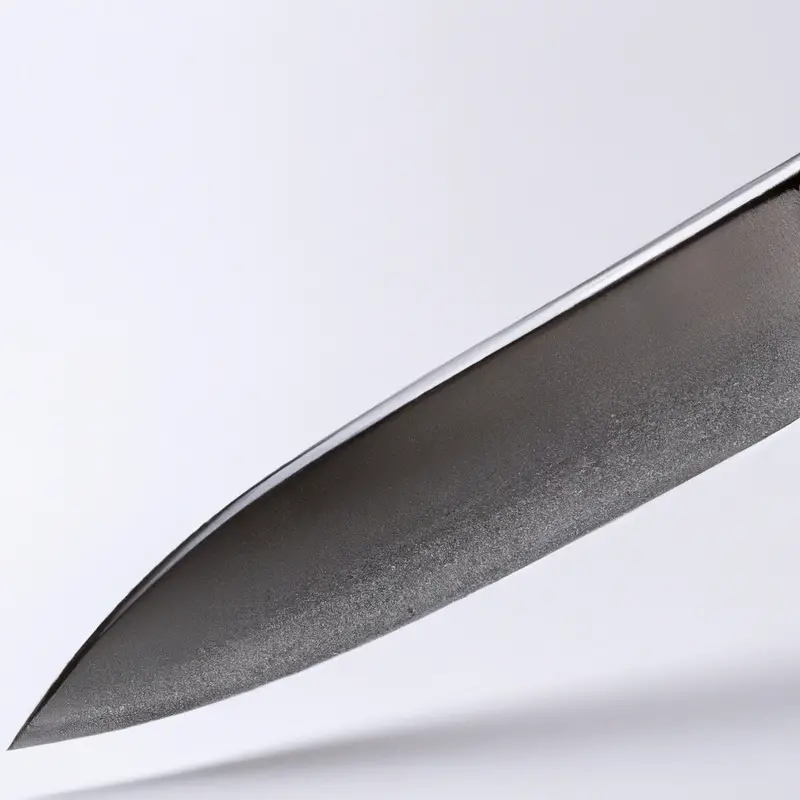

Final Verdict
Understanding the different parts of a Santoku knife is essential for anyone looking to purchase or use one. From the blade to the handle and everything in between, each component plays a critical role in delivering precision and control for your everyday cutting tasks.
By choosing the right materials, design, and blade grind, you can enhance your cutting experience while prolonging the lifespan of your Santoku knife.
Maintaining and sharpening your knife regularly is also key to ensuring optimal performance. With this knowledge, you can confidently select the best Santoku knife for your needs and become a more skilled and efficient cook.
Remember, investing in a high-quality Santoku knife is a worthwhile investment that will serve you well for years to come.

